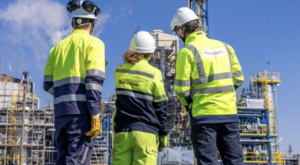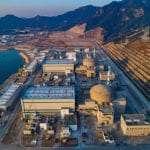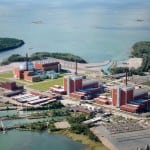French utility Électricité de France (EDF)on July 25 said it has pushed fuel loading at its 1.6-GW Flamanville 3 nuclear project to the fourth quarter of 2019 and increased cost estimates for the project by another €400 million (USD $467.1 million).
EDF said its current cost for the project has ballooned to €10.9 billion (USD $12.75 billion), triple the original budget. The utility today said start-up for the troubled EPR reactor will not occur until at least the second quarter of 2020. Fuel loading and commercial operation start dates at the Normandy plant have now been revised twice in the past year; in October 2017, EDF said fuel loading was set for late 2018, with full production in 2019.
EDF said the latest delay is due to faulty welding of joints, which the utility had previously discussed in April and May of this year. The utility said it has inspected 148 of 150 welds in the main secondary system at Flamanville 3 and found 33 needed repairs. It also said it would rework an additional 20 welds “though they do not have any defects,” saying those welds do not meet “EPR design phase” standards.
French nuclear regulator ASN has said it is monitoring EDF’s progress and examining its plans in detail. EDF today said it expects hot testing of the EPR will begin before year-end.
The Flamanville project has been delayed several times since construction began in 2007. The EPR reactor, which was designed by French nuclear firm AREVA (now Framatome), is the first third-generation pressurized water reactor being built in France, a country that receives about 75% of its power from nuclear energy. The reactor originally was scheduled to be online in 2012. Among the problems—in 2009, nuclear regulatory authorities in France, the UK, and Finland told AREVA there were problems with the reactor’s digital Instrumentation and Control (I&C) systems. Italian energy company Enel in 2012 withdrew its participation in the project after EDF announced $2.6 billion in cost overruns.
EDF in 2013 acknowledged it was having trouble building the EPR design. The company’s CEO, Jean-Bernard Lévy, in 2015 said the company was working on a “New Model” EPR design that would be easier to build. A year later the company said it would build two of the new reactors in France by 2030. But after AREVA encountered financial problems and merged with EDF, which brought back the Framatome name, French Energy Minister Nicolas Hulot in January 2018 said building any new EPR “is neither a priority or a plan,” adding that the country’s goal is to develop renewable energy and reduce its reliance on nuclear power.
Hulot’s statement came after an explosion at the existing Unit 1 at the Flamanville plant in 2017 raised more concerns about the country’s nuclear power initiatives.
EDF today also said it is reviewing the impact of delays at Flamanville on operation of the two reactors at its Fessenheim nuclear plant, “particularly in relation to the French Energy Transition Law for green growth, which caps nuclear electricity generation capacity.” EDF has said it will close Fessenheim once Flamanville 3 is operational.
EDF has had success with an EPR reactor. EDF and China General Nuclear Power Group on June 29 said Unit 1 at the Taishan plant in China was connected to the power grid, with commercial operation expected later this year. EPR units also are being built at the Hinkley Point and Sizewell nuclear plants in the UK.
Another oft-delayed EPR project is still moving forward in Finland. Olkiluoto 3 project developer Teollisuuden Voima Oyj last month said that unit is scheduled to be connected to the grid in May 2019, after announcing another start-up delay last year.
—Darrell Proctor is a POWER associate editor (@DarrellProctor1, @POWERmagazine).










